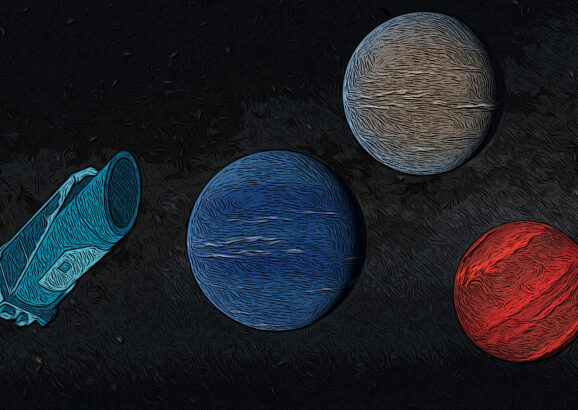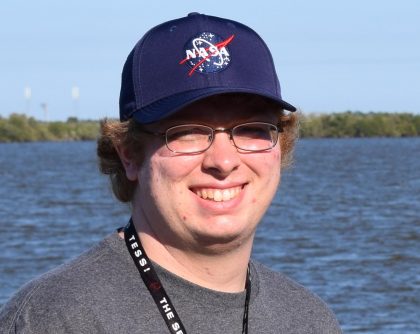Andrew Vanderburg
Research Interests
Prof. Andrew Vanderburg’s research focuses on studying exoplanets, or planets which orbit stars other than the Sun. Andrew is interested in developing cutting-edge techniques and methods to discover new planets outside of our solar system, and studying the planets we find to learn their detailed properties.
In recent years, astronomers have found that planets the size of Earth are common in our galaxy, but little is known about their characteristics. Are these planets mostly rocky like the Earth, or do they have thick gaseous atmospheres like Uranus and Neptune? From which elements and materials are these planets built, and are their geologies similar to our own planet’s?
Andrew and his team tackle these problems by conducting astronomical observations using facilities on Earth like the Magellan Telescopes in Chile as well as space-based observatories like the Transiting Exoplanet Survey Satellite and the James Webb Space Telescope. Once the data from these telescopes are in hand, Andrew’s team specializes in developing new analysis methods that help extract as much scientific value as possible. Currently, Andrew’s group is exploring the use of machine learning — especially deep neural networks — in exoplanet detection to both increase the sensitivity and efficiency of planet searches. Eventually, through this work, Andrew hopes to help answer questions like “Are the planets orbiting other stars throughout the galaxy anything like the worlds in our Solar system?” and “Could any of these planets be hospitable to life like the Earth?”.
Biographical Sketch
Andrew is originally from Austin, Texas. He received his BA in Physics and Astrophysics from the University of California, Berkeley in 2013 and his PhD in Astronomy from Harvard University in 2017. Afterwards, Andrew moved to the University of Texas at Austin with a NASA Sagan postdoctoral fellowship. In 2020, Andrew joined the faculty in Astronomy at the University of Wisconsin-Madison before moving to MIT in July 2021.

A telescope’s last view
Astronomers discover the last three planets the Kepler telescope observed before going dark.
Awards & Honors
- 2024 // Awarded the Bruno B. Rossi Career Development Assistant Professor of Physics
- 2024 // Sloan Research Fellow
- 2023-2025 // Committed to Caring honoree (MIT)
- 2022 // Harvard Bok Prize Lecture
- 2018 // NASA Exceptional Public Achievement Medal
- 2017 // NASA Sagan Fellowship
Key Publications
-
Vanderburg, A., “A giant planet candidate transiting a white dwarf”, Nature, vol. 585, no. 7825, pp. 363–367, 2020. doi:10.1038/s41586-020-2713-y.
-
Vanderburg, A., “A disintegrating minor planet transiting a white dwarf”, Nature, vol. 526, no. 7574, pp. 546–549, 2015. doi:10.1038/nature15527.
-
Vanderburg, A. and Johnson, J. A., “A Technique for Extracting Highly Precise Photometry for the Two-Wheeled Kepler Mission”, Publications of the Astronomical Society of the Pacific, vol. 126, no. 944, p. 948, 2014. doi:10.1086/678764.
